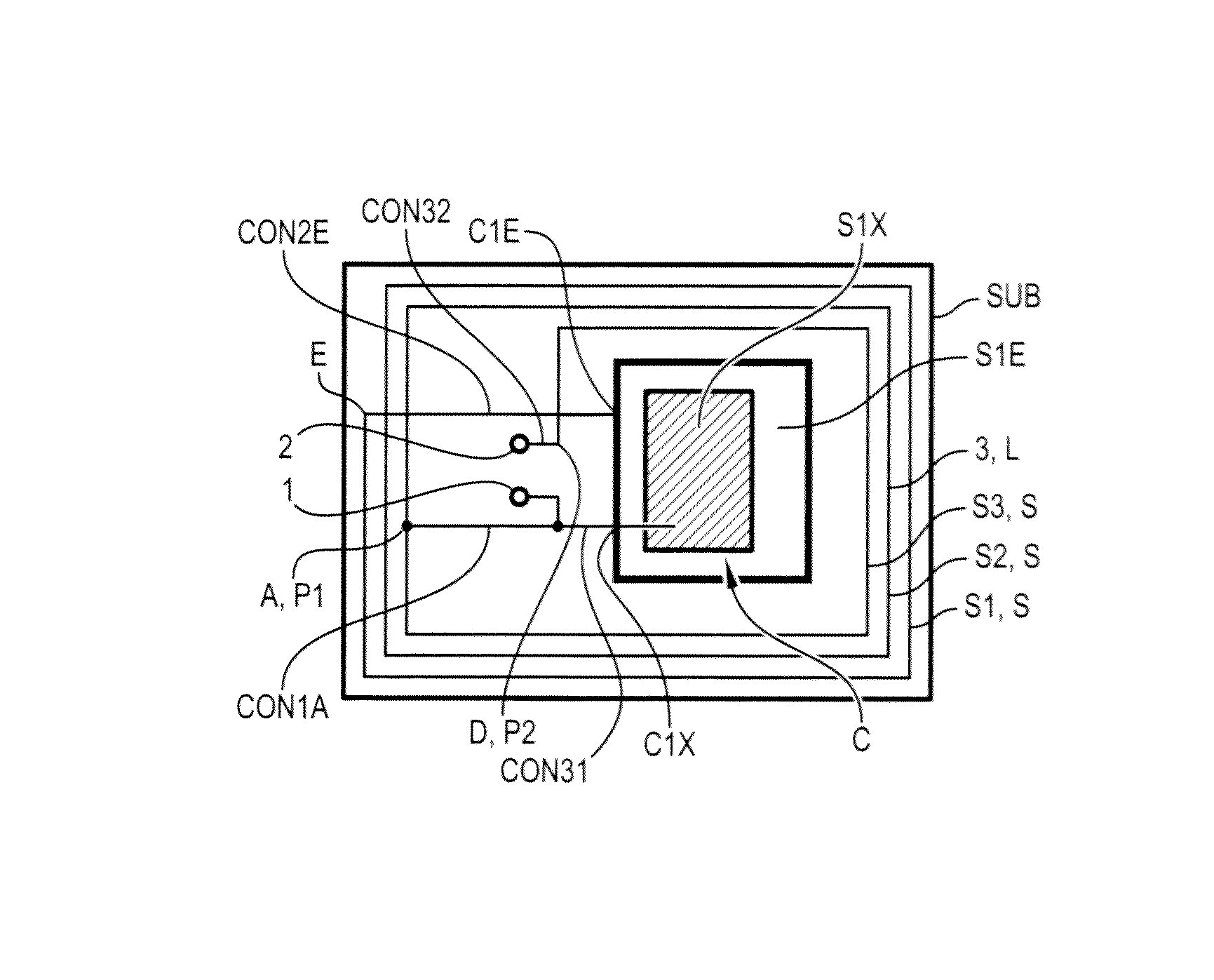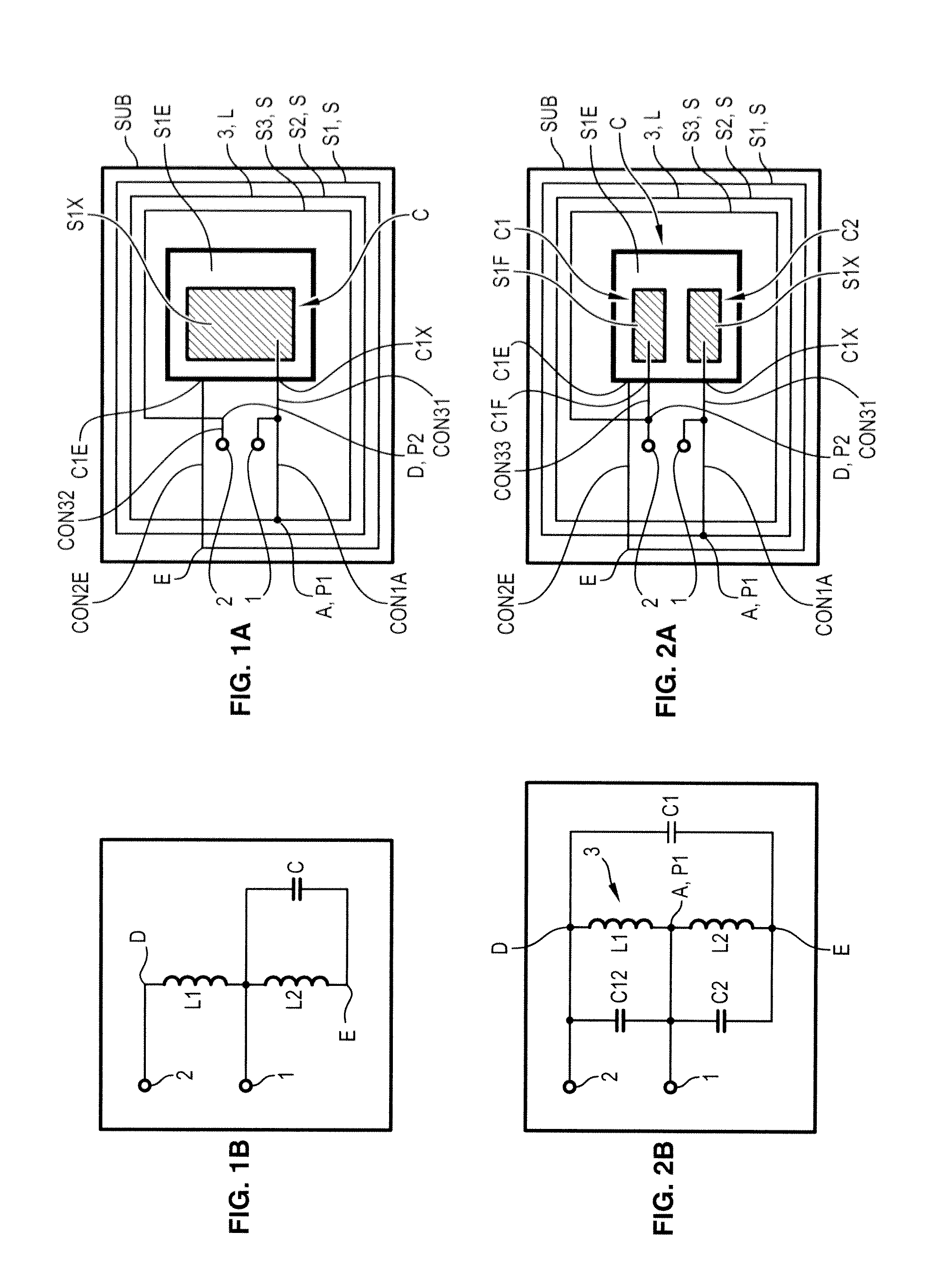RFID antenna circuit
a technology of antenna circuit and antenna, applied in the direction of burglar alarm mechanical actuation, burglar alarm by hand-portable object removal, instruments, etc., can solve the problems of reducing the efficiency of the antenna, reducing the communication distance or reducing the transmission of energy or information, and reducing the transmission efficiency. , the effect of improving the transmission conditions
- Summary
- Abstract
- Description
- Claims
- Application Information
AI Technical Summary
Benefits of technology
Problems solved by technology
Method used
Image
Examples
Embodiment Construction
[0150]In what follows, the antenna circuit can either be a circuit emitting electromagnetic radiation via the antenna, or a circuit which receives electromagnetic radiation via the antenna.
[0151]In a first application, the RFID antenna circuit is of transponder type, to function as a portable card, tag, to be integrated in a paper document such as a document issued by an official authority e.g. a passport, USB keys, SIM cards and (U)SIM cards called “RFID or NFC SIM card”, stickers for Dual cards or Dual Interface cards (the sticker itself having an REID antenna), watches.
[0152]In a second application, the REID antenna circuit is of reader type to read i.e. at least receive the signal radiated by the REID antenna of a transponder such as defined in the first case, such as mobile phones, PDAs, computers.
[0153]Generally, the circuit comprises an antenna 3 formed of at least three turns S of a conductor on an insulator substrate SUB. The turns S have an arrangement defining an inductan...
PUM
 Login to View More
Login to View More Abstract
Description
Claims
Application Information
 Login to View More
Login to View More - R&D
- Intellectual Property
- Life Sciences
- Materials
- Tech Scout
- Unparalleled Data Quality
- Higher Quality Content
- 60% Fewer Hallucinations
Browse by: Latest US Patents, China's latest patents, Technical Efficacy Thesaurus, Application Domain, Technology Topic, Popular Technical Reports.
© 2025 PatSnap. All rights reserved.Legal|Privacy policy|Modern Slavery Act Transparency Statement|Sitemap|About US| Contact US: help@patsnap.com



